
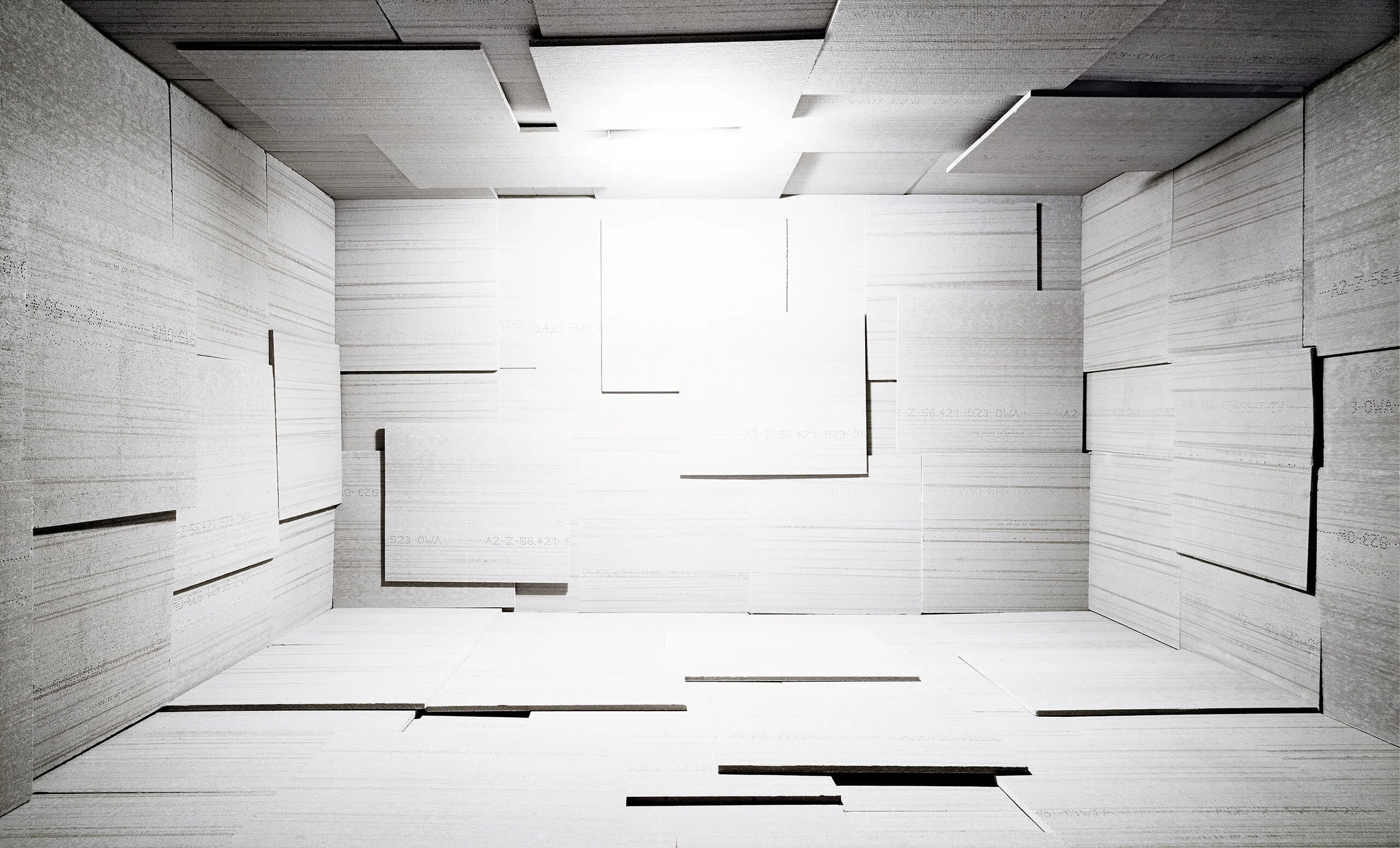
When the Dutch artist Marleen Sleeuwits watched a documentary about a businessman traveling the world for his work, she was intrigued. In the film, he wakes up one day not knowing where he is. Even looking out of the window gives him no clues.
Struck by the businessman’s surreal experience, Marleen started taking photos inside airports all over Europe. “I thought it was fascinating that there seems to be no actual place or time there,” she says.
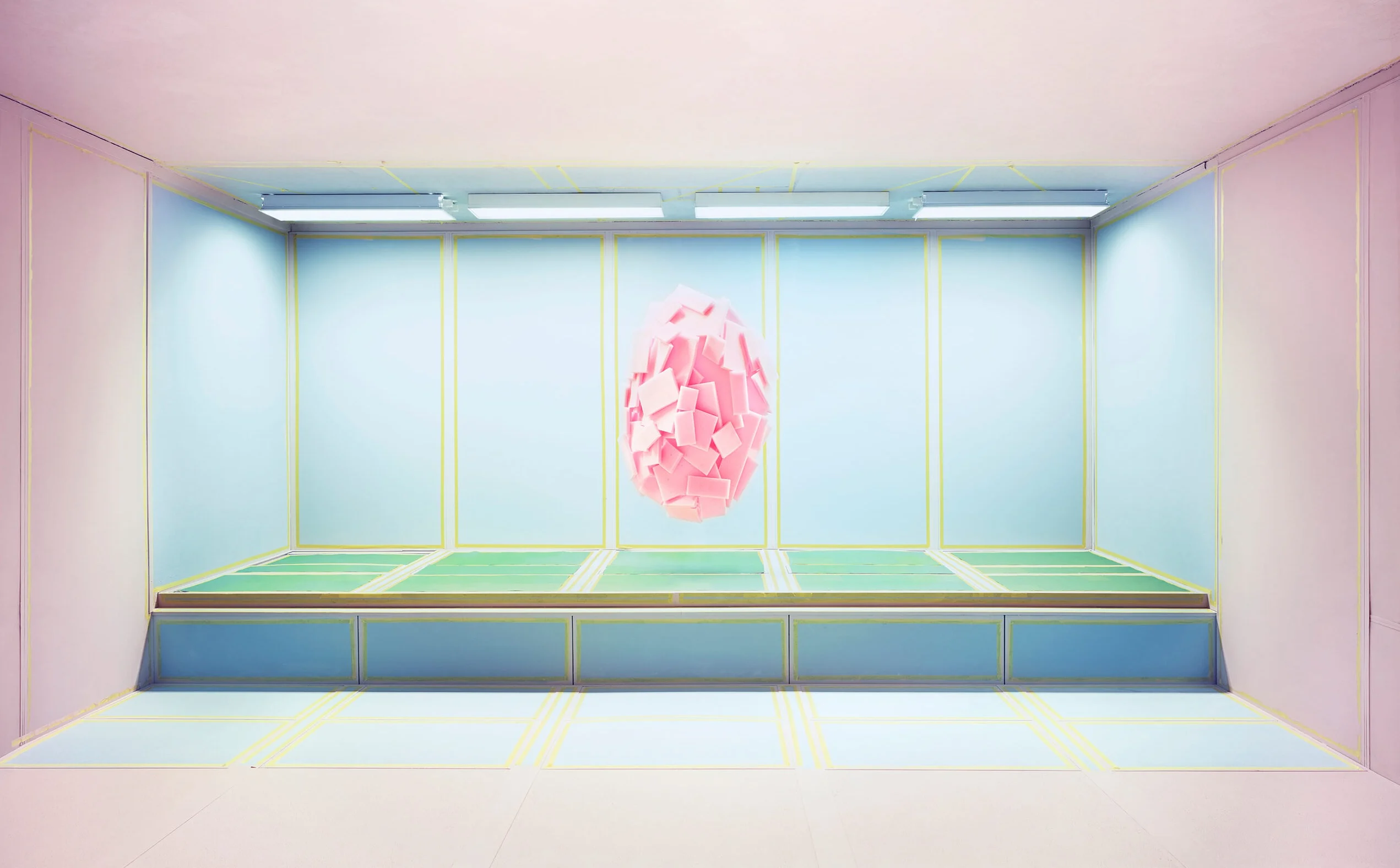
From airports, her interest in nondescript areas broadened to include waiting rooms, abandoned corridors and empty carpeted office blocks, once filled with messy cubicles, water coolers and employees bustling around.
“I have always been hugely inspired by places that are characterized by a lack of individuality and character,” she says. “Due to a lack of distinctive features, it is difficult to feel connected to these locations. They invoke limited emotions and leave no impression in our memory. I like the tension between the beauty and the ugliness these interiors often possess.”
In her ongoing series Interiors, Marleen moves beyond photographing these forgotten spaces and instead completely deconstructs them to create spectacular sculptural interventions and optical illusions.
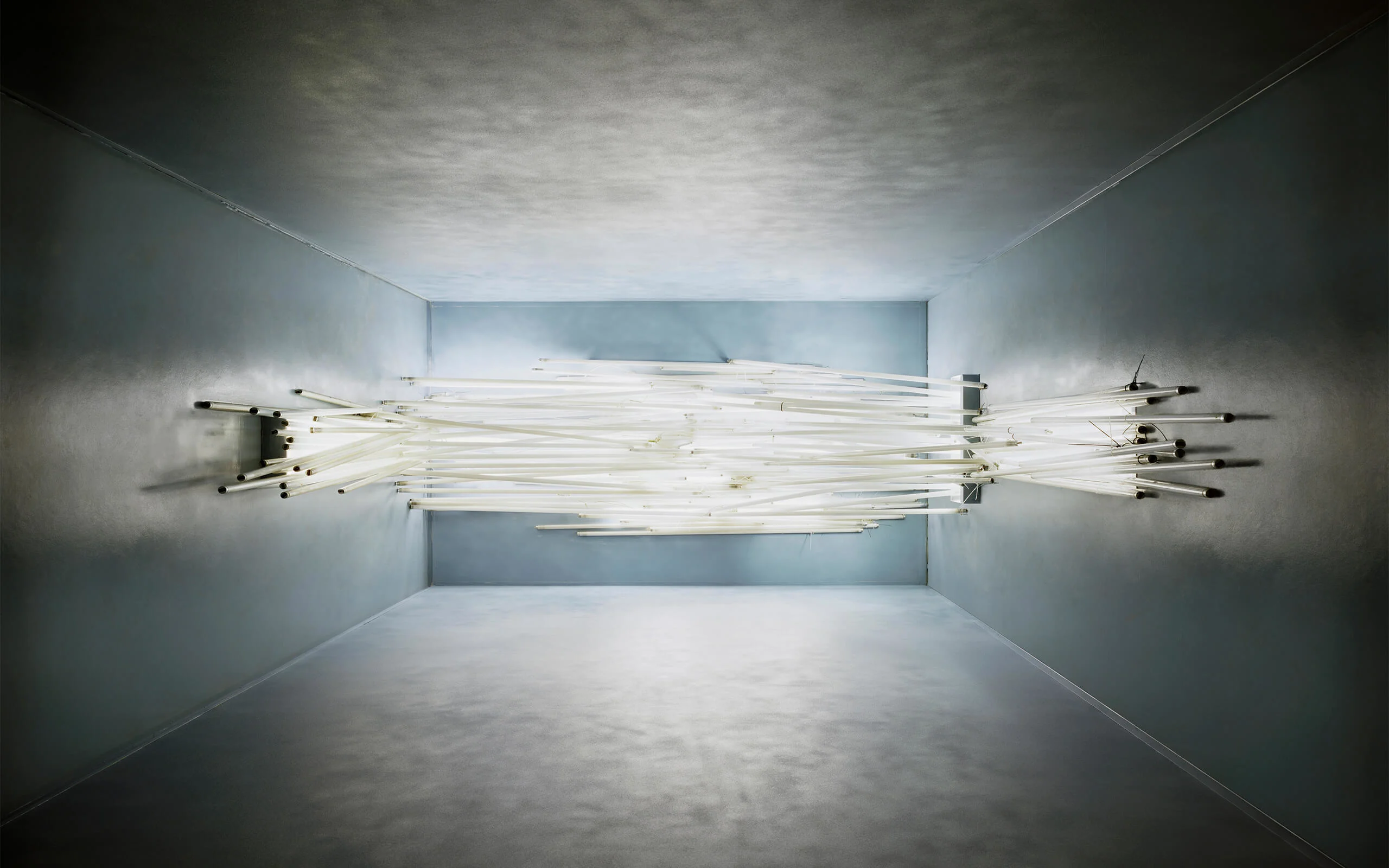
Armed with power tools, Marleen uncovers what sits above the suspended ceilings and behind the drywall. What lies beneath is often brightly colored — clouds of pink insulation foam or industrial reflective silver foil. “Originally I trained as a photographer but more and more I feel like a construction worker,” she says, “always covered in dust and paint.
“I am looking for a way to make a connection with the space, to give these locations special features and make their true identity visible: as if I stripped the space of its outer layers and showed its true core.”
The locations that Marleen transforms couldn’t be more different to her house in The Hague, the third biggest city in The Netherlands. The house was built in 1890 and everything is old; a bit crooked but beautiful. For her work though, she rents empty offices in her hometown, “especially horrible, brutalist buildings from the 1970s that no-one wants to rent.”
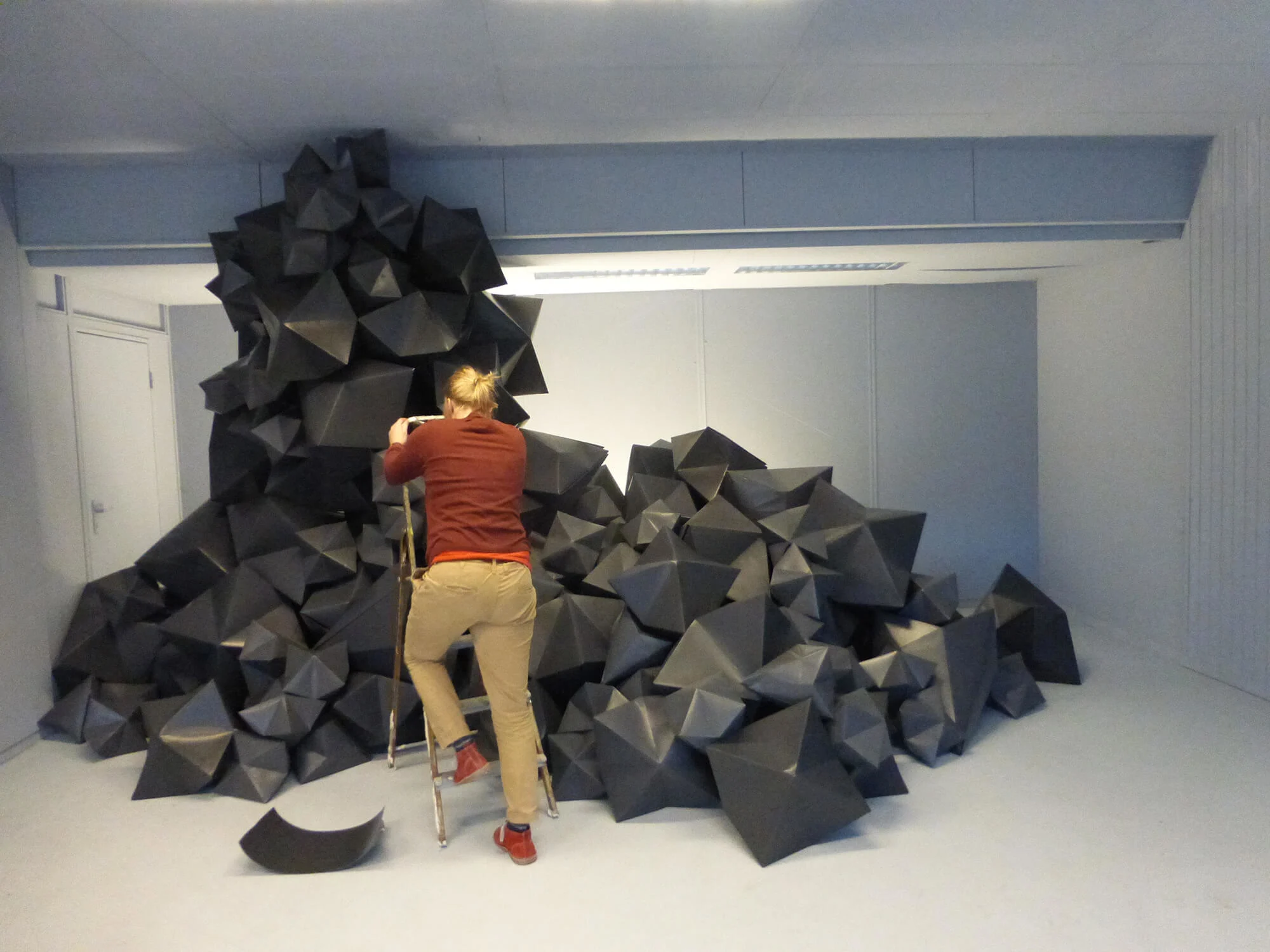
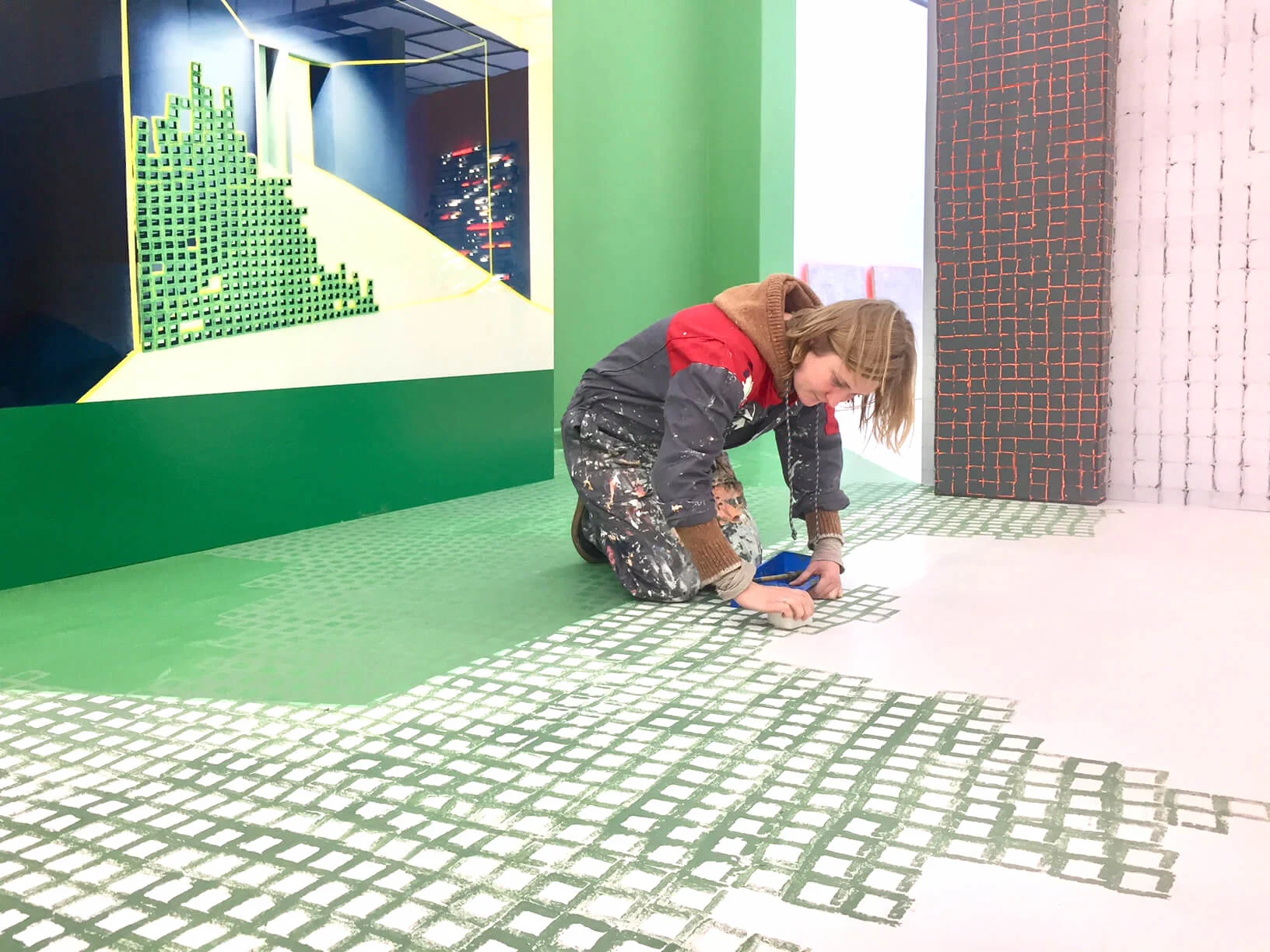
It was a good opportunity for me to experiment with this way of working without going bankrupt.
In The Netherlands squatting is illegal, but anti-squatting is promoted as “a cheap and adventurous way to live” for students or artists who move into abandoned offices, schools or libraries, in turn protecting them from vandalism.
“It was a good opportunity for me to experiment with this way of working without going bankrupt,” Marleen says.
She works with materials that are typically found in these kind of buildings, used to conveniently and quickly change the identity of a space like peel-and-stick tiles.
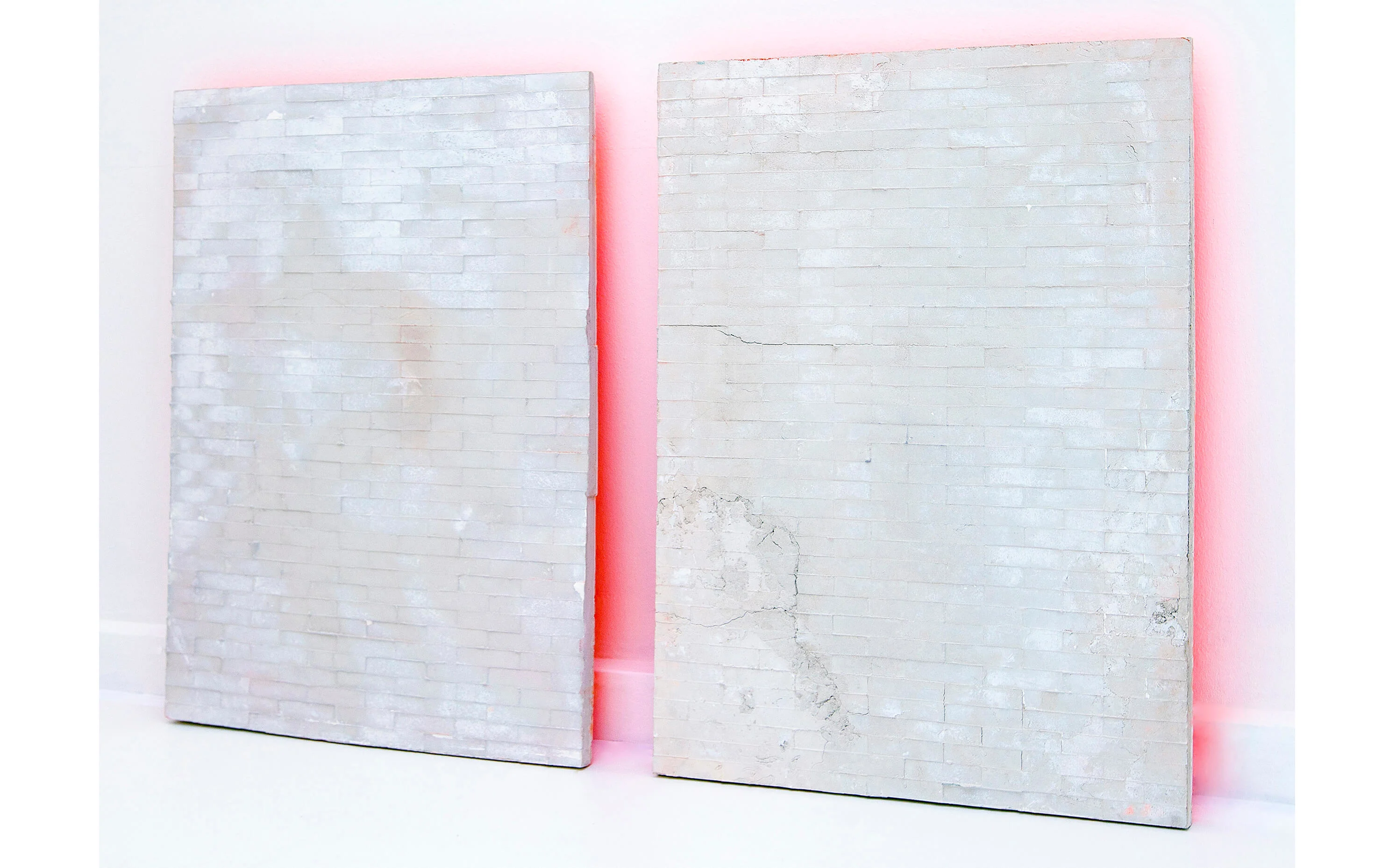
Her work is an inquiry into whether and how human beings can relate to rapidly changing locations. “I see my work as playful research into how these spaces are put together,” she says. “I let aspects of the interior guide me.”
For her renovations, Marleen only works with found materials but finds this far from limiting. She’ll bundle tube lights and electrical cables together or use insulation blocks, foil, polystyrene, carpet tiles or colorful tape to create large, erratic objects.
“If a certain material has a great structure but the color is boring, I allow myself to paint over it,” she says. “I often use bright sparkly colors to create a tension between an aesthetic colorful picture on the one hand and an impersonal place on the other. I like it if the viewer doesn’t know whether to love it or hate it.”

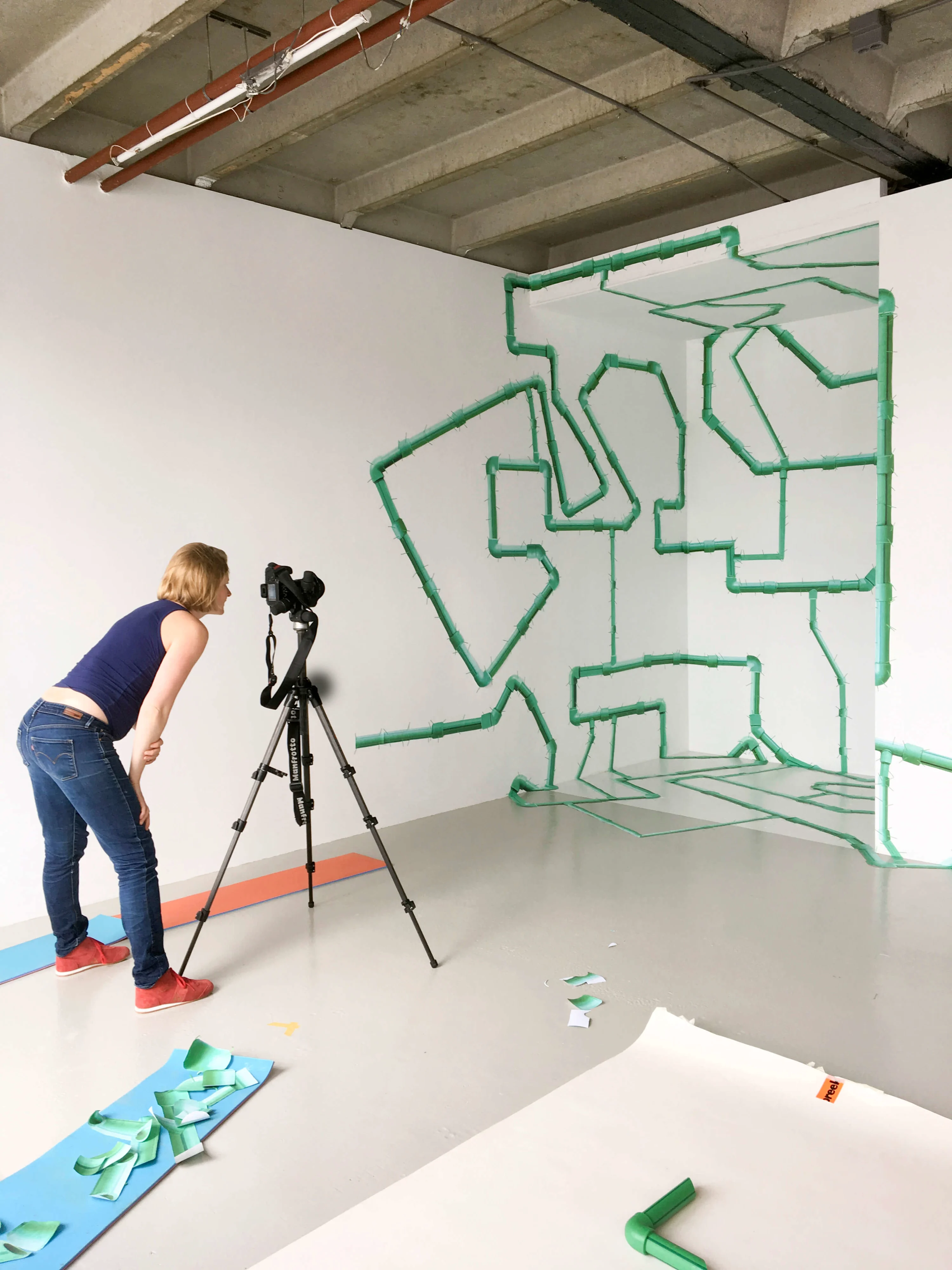
The result is a completely new space in which the distinction between the different art forms used is blurred.
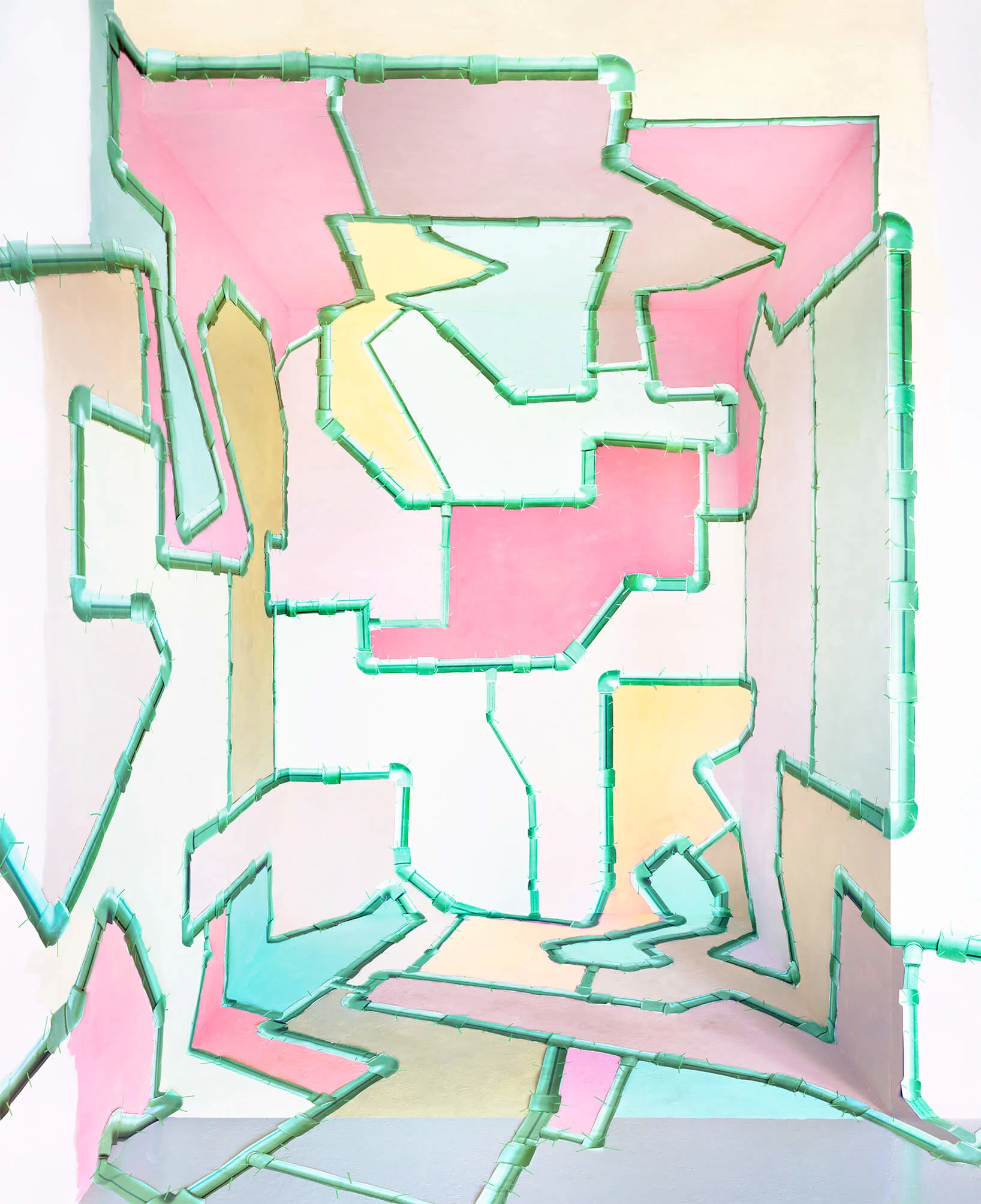
For her piece Interior no 39 Marleen drilled more than 3,000 holes into the walls and ceiling of an office until you could see right through into the office next door. The extreme polka dots took her more than three months to complete.
For another piece she removed all the tube lights from an entire floor of an office building and connected them to one transformer. Proving to be too many lights for one energy source, the bulbs flicker constantly just like they did where they were originally found.
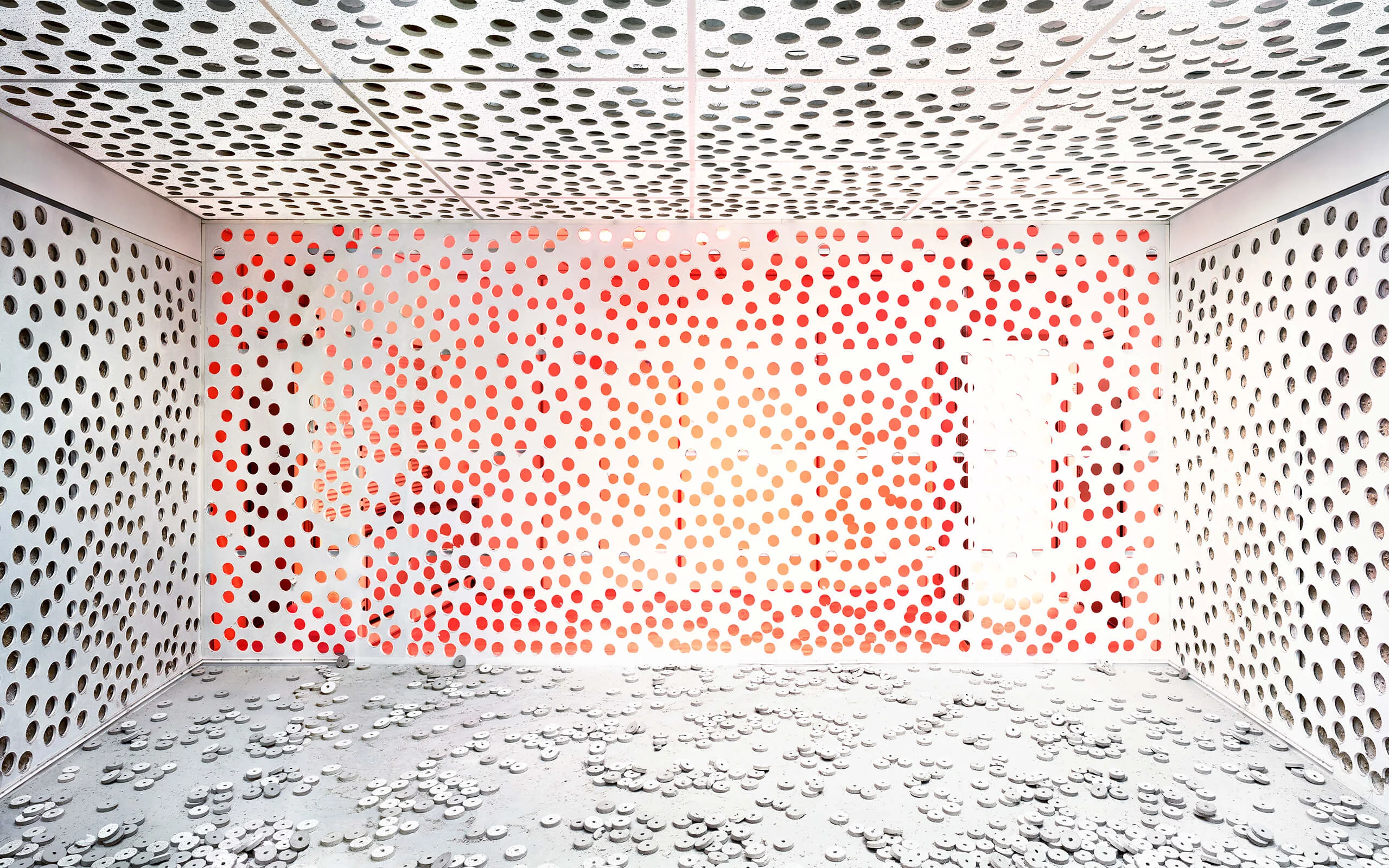
As a photographer Marleen would capture architecture and interior design so photographing her own conceptual spaces was a natural progression. The entire focus of her early work was for it to be effective through the lens. She’d only construct her installations in one corner of a room and they’d only be interesting viewed from the specific angle of her camera set-up.
The artificial light she uses in the photos tricks the eye into translating the images as digital renders. The spaces occupy a place between reality and illusion, further emphasizing the feeling of dislocation.

Marleen used to only show this photographic work in her early exhibitions but the flat 2D images — although intriguing — created a barrier. She wanted people to feel like they could walk right in. Over time she says her work has “eloped from the frame” and her exhibition spaces have become site-specific installations.
“The result is one completely new space in which the distinction between all the different art forms used is blurred,” she says. “I achieved this by transforming the walls, floors and ceilings of the location into a part of the installation. By taking away the awareness of the bottom and the top, the beginning and the end, and by allowing the space to mirror and repeat itself, I create an experience that makes you feel detached from your usual grip.”
Words by Alix-Rose Cowie.


